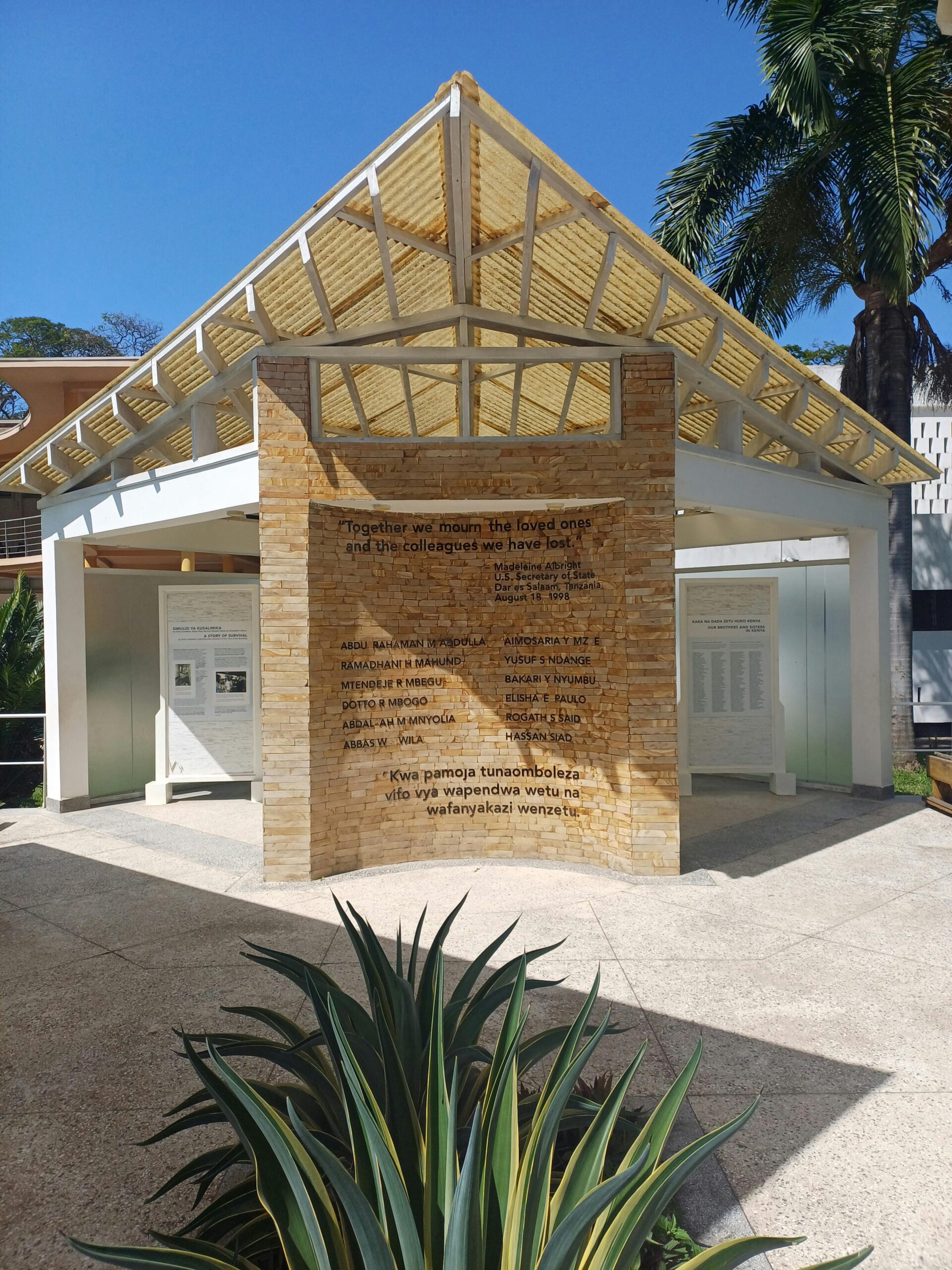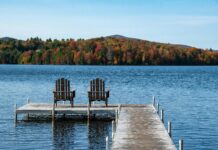Exploring Vermont cities offers an unforgettable adventure filled with charming streets, rich history, and stunning natural beauty. Have you ever wondered which hidden gems in Vermont are waiting to be discovered beyond the well-known ski resorts and maple syrup farms? This article dives deep into the must-visit destinations in Vermont, revealing some of the most enchanting towns and cities that travelers often overlook. Whether you’re a seasoned explorer or planning your first trip to the Green Mountain State, these Vermont travel hotspots will spark your curiosity and inspire your next getaway.
From vibrant arts scenes to cozy cafes nestled in historic districts, Vermont’s cities combine rustic charm with modern appeal in a way that few places can match. What makes these Vermont cities unique for tourists? It’s the blend of small-town friendliness with big-city culture, offering something for every type of traveler. Imagine strolling through streets lined with colorful foliage in autumn, or enjoying farm-to-table dining experiences in a city that values sustainability and local produce. These are just a few reasons why the best cities to visit in Vermont should be on your travel list.
If you want to unlock the secrets of Vermont beyond the usual spots, keep reading as we uncover off-the-beaten-path Vermont destinations, including quaint villages, art hubs, and nature escapes. Ready to explore the top Vermont cities for culture and outdoor adventures? Let’s start this exciting journey and discover why Vermont is more than just a picturesque state—it’s a treasure trove of unforgettable experiences!
Top 7 Vermont Cities You’ve Never Heard Of But Must Explore in 2024
Vermont is often famous for its stunning fall foliage, maple syrup, and charming small towns like Burlington or Montpelier. But, beyond those well-known spots, there’s a treasure trove of lesser-known cities that many travelers haven’t discovered yet. These hidden gems offer unique experiences, rich history, and natural beauty that make them must-visit destinations for 2024. If you think you know Vermont well, think again. Here are the top 7 Vermont cities you’ve never heard of but should definitely explore this year.
1. St. Johnsbury – The Cultural Crossroad
Nestled in the Northeast Kingdom, St. Johnsbury is a city filled with old New England charm and a surprising cultural vibe. It has the world-famous Fairbanks Museum and Planetarium, which is one of the only public planetariums in Vermont. The city’s downtown area has art galleries and antique shops that you wouldn’t expect to find in a small town.
What makes St. Johnsbury special?
- Rich railroad history dating back to the 19th century
- The St. Johnsbury Athenaeum, combining a library and art museum under one roof
- Scenic views of the surrounding Green Mountains
Even if you’re not a history buff, the local cafes and farm-to-table restaurants make it worth a stop.
2. Barre – The Granite City
Barre might sound familiar to some, but it’s often overlooked when planning trips in Vermont. Known as the “Granite Center of the World,” Barre has a long history tied to granite quarrying and sculpture. You can visit the Rock of Ages quarry, which is one of the largest deep granite quarries in the world. The city’s streets are lined with impressive granite buildings and monuments.
Why visit Barre?
- The Granite Museum showcasing local stonecutting heritage
- Annual Barre Heritage Festival celebrating its immigrant roots
- Opportunity to see artisans at work in granite workshops
Barre also hosts a vibrant community theater scene, perfect for catching a local play on the weekend.
3. Middlebury – Academic and Artistic Vibes
Home to Middlebury College, this small city blends academic energy with a strong artistic community. Middlebury’s downtown has charming shops, bookstores, and a variety of restaurants. It’s a great place for people who want to mix intellectual exploration with leisure.
Points of interest in Middlebury:
- Henry Sheldon Museum of Vermont History
- The Middlebury College Museum of Art
- Nearby hiking trails in the Green Mountains
Middlebury also boasts annual events like the Vermont Folklife Center’s festivals, providing a deep dive into local culture.
4. Newport – Gateway to Lake Memphremagog
If you love water activities and natural scenery, Newport is a hidden gem you should consider. Located on the southern shore of Lake Memphremagog, Newport offers opportunities for boating, fishing, and lakeside relaxation. It’s a small city but with a welcoming community and a lively waterfront.
What’s cool about Newport?
- Access to a beautiful 31-mile long lake stretching into Canada
- Historic downtown with locally owned shops
- Annual events like the Newport Winter Festival
Newport’s location also makes it a strategic base for exploring northern Vermont and even crossing into Quebec for a day trip.
5. Vergennes – Vermont’s Smallest City With Big Personality
Vergennes might be the smallest city in Vermont, but it packs a punch when it comes to character. This city is often missed by tourists, yet it has a rich history as one of the oldest chartered cities in the state. Its charming Main Street features classic New England architecture and several local businesses.
What to know about Vergennes?
- The city was a pivotal naval base during the Revolutionary War
- The local farmers market is a hub for fresh produce and crafts
- Close to Otter Creek Falls, a scenic spot perfect for photography
Vergennes offers a quiet but enriching experience for those wanting to escape crowded tourist spots.
6. Swanton – The Champlain Valley’s Quiet Treasure
Swanton sits close to Lake Champlain and offers a blend of rural charm and lakeside beauty. It’s a great place for outdoor enthusiasts who prefer less crowded destinations. Swanton is known for its agricultural background and community spirit.
Highlights of Swanton:
- Proximity to Missisquoi National Wildlife Refuge, great for birdwatching
- Annual Champlain Valley Fair, one of Vermont’s biggest agricultural fairs
- Historic sites including old mills and churches
Swanton’s small-town vibe and natural surroundings make it a perfect stopover for a peaceful Vermont experience.
7. Brattleboro – Arts, Food, and River Views
Located in southeastern Vermont, Brattleboro is a city with a lively arts scene and a reputation for progressive culture. It’s nestled along the Connecticut River and offers a mix of outdoor activities
Why Vermont’s Small Towns Are the Ultimate Hidden Gems for Travelers
Vermont, nestled in the heart of New England, is often celebrated for its stunning natural beauty and vibrant autumn foliage. But beyond the well-known tourist spots and bustling cities, Vermont’s small towns offers a unique charm that travelers often overlook. These small towns are the ultimate hidden gems, providing experiences that can’t be found anywhere else. If you are looking for an authentic visit to Vermont cities and towns, this article dives into why these places should be on your travel list.
Why Vermont’s Small Towns Are Special
Vermont’s small towns have a personality that big cities just can’t match. Their slower pace invites visitors to unwind and truly immerse themselves in the local culture. Many of these towns have population under 5,000 people, which mean you won’t run into crowds or tourist traps. Instead, you get to meet friendly locals, explore quaint main streets, and enjoy nature at its best.
One interesting fact is that Vermont was the first state to join the United States after the original thirteen colonies. This historical background means many towns are filled with centuries-old buildings, covered bridges, and historic landmarks. Unlike cities, which often change quickly with modern development, Vermont’s small towns have preserved their heritage, making every visit feel like stepping back in time.
Must-Visit Small Towns in Vermont
If you want to discover hidden gems in Vermont cities and towns, here are some places that travelers should consider:
- Stowe: Known as a ski destination, Stowe also charm visitors in the off-season. It has a lively arts scene, with galleries and festivals that showcase local talent.
- Woodstock: This town often called one of the prettiest in America. Its village green, covered bridge, and historic inns make it perfect for a romantic getaway.
- Manchester: Famous for its outlet shopping, Manchester also boasts hiking trails and craft breweries. It’s a mix of outdoors and culture.
- Middlebury: A college town with a strong literary history, Middlebury offers bookshops, theaters, and farm-to-table restaurants.
- Brattleboro: Known for its vibrant arts community, Brattleboro hosts several annual festivals and has a thriving local food scene.
Comparing Vermont Small Towns to Larger Cities
When you compare Vermont’s small towns to the larger cities like Burlington or Montpelier, the differences become clear. Cities are more busy, with more options for dining, nightlife, and shopping, but they often lack the intimacy and peacefulness of smaller towns. For example:
| Feature | Vermont Small Towns | Larger Vermont Cities |
|---|---|---|
| Population | Usually under 5,000 | Tens of thousands, up to 42,000 |
| Pace of Life | Slow, relaxed | Fast, bustling |
| Tourist Crowds | Light, less commercialized | Heavier, more commercial |
| Historic Preservation | High, many original buildings | Mixed, more modern structures |
| Local Culture | Deeply rooted in traditions | More diverse, cosmopolitan |
For travelers who want to experience Vermont like a local, visiting small towns is the best way to go. You get to see the real Vermont, not just the tourist version.
What Makes These Hidden Gems Perfect for Travelers?
Small towns in Vermont offer several advantages for visitors who seek something different from typical vacation spots.
- Authenticity: You can find handmade crafts, locally sourced food, and genuine stories from residents.
- Outdoor Activities: Hiking, fishing, skiing, and leaf-peeping are all accessible without the crowds.
- Unique Events: Many towns host seasonal fairs, farmers markets, and cultural festivals that reflect Vermont’s heritage.
- Affordable Accommodation: Small inns, bed and breakfasts, and cabins often provide cozy stays at reasonable prices.
- Community Feel: It’s easier to connect with people and experience the warmth of Vermont hospitality.
For example, the annual Vermont Maple Festival in St. Albans celebrates the state’s famous maple syrup with tastings, crafts, and parades. Events like this don’t often happen in bigger cities, where the focus is on larger scale entertainment.
Tips for Exploring Vermont’s Small Towns
If you plan a trip to Vermont cities and want to include small towns in your itinerary, here are some practical tips:
- Rent a Car: Public transportation outside the bigger cities is limited, so having a vehicle is essential.
- Plan for All Seasons: Vermont’s weather changes rapidly, so pack layers and check local forecasts.
- Visit Local Shops: Support small businesses by buying souvenirs and meals locally.
- Talk to Residents: Don’t hesitate to ask locals for recommendations—they often know the best hidden spots.
- Stay Overnight: Spend at least one night to experience the town’s evening ambiance
Discover the Best Outdoor Adventures in Vermont Cities Beyond Burlington
Vermont is often known for its charming landscapes and the bustling city of Burlington, but there is so much more waiting to be explored beyond this popular spot. If you think Vermont cities only offer a quiet, small-town vibe, you are missing out on some of the best outdoor adventures and hidden gems that the Green Mountain State has tucked away in its lesser-known towns. This article will take you on a journey through some Vermont cities beyond Burlington, revealing must-visit destinations and unique experiences for nature lovers, adventure seekers, and curious travelers alike.
Exploring Vermont Cities: More Than Just Burlington
Burlington gets a lot of attention as Vermont’s largest city and a hub for culture, food, and lakeside views. But Vermont is filled with many other cities and towns that offer a different kind of charm and outdoor activities. Places like Montpelier, Stowe, Middlebury, and Barre are great examples where outdoor adventures are plentiful, and the crowds are lighter. These locations have stories and landscapes that are just waiting to be discovered.
For instance, Montpelier, the smallest state capital in the United States, offers a mix of history and nature. It is surrounded by hills and forests that make it perfect for hiking and winter sports. Meanwhile, Stowe, often called the “Ski Capital of the East,” has trails for mountain biking during warmer months and some of the best skiing in winter. Middlebury is home to Middlebury College and offers scenic river trails and access to the Green Mountains. Barre has a rich history in granite quarrying and also features nearby natural parks.
Must-Visit Vermont Cities and Their Outdoor Adventures
Here’s a list of some Vermont cities beyond Burlington and the outdoor activities you can do there:
Montpelier
- Hiking at Hubbard Park
- Ice skating at North Branch Park
- Exploring the Winooski River Trail
Stowe
- Mountain biking on the Stowe Recreation Path
- Skiing at Stowe Mountain Resort
- Waterfalls exploration, including Moss Glen Falls
Middlebury
- Kayaking on the Otter Creek
- Visiting the Middlebury College Snow Bowl for skiing
- Walking the scenic trails in Robert Frost Trail
Barre
- Granite quarry tours
- Hiking at Groton State Forest nearby
- Visiting the Barre Town Recreation Area
Historical Context and Outdoor Culture in Vermont Cities
Vermont’s outdoor culture is deeply connected to its history. Many of these cities grew up around mills, farms, or quarrying industries, which shaped how people interacted with the landscape. Barre, for instance, became a granite cutting center, and today visitors can see the remnants of this industry alongside natural beauty. Montpelier’s history as a capital city means it has preserved many green spaces and parks, blending urban life with nature.
The towns also have strong traditions in outdoor sports. Skiing and snowboarding became popular in the 20th century, especially in places like Stowe and Middlebury. Trails were developed not just for recreation but also as old logging roads turned into hiking and biking paths. Vermont’s commitment to preserving natural environments means these outdoor adventures are sustainable and accessible.
Comparing Outdoor Options: Burlington Vs. Other Vermont Cities
To help you decide where to go next time you want an outdoor adventure, here is a quick comparison table between Burlington and other Vermont cities:
| Feature | Burlington | Montpelier | Stowe | Middlebury | Barre |
|---|---|---|---|---|---|
| Popular Outdoor Activity | Lake Champlain waterfront | Hiking and skating | Skiing and biking | Kayaking and trails | Quarry tours and hiking |
| Crowds | High, tourist-heavy | Moderate, quieter | Moderate, seasonal | Low, peaceful | Low, local feel |
| Historical Interest | Waterfront history | State capital buildings | Ski resort history | College town heritage | Granite industry |
| Accessibility | Urban, well connected | Small but accessible | Resort town | College town | Industrial town |
Practical Tips for Visiting Vermont Cities Beyond Burlington
When planning your trip, consider these practical tips to make the most of your outdoor adventures in Vermont cities:
- Season Matters: Different cities shine in different seasons. Stowe is best for winter sports, while Middlebury offers great kayaking and hiking in summer.
- Local Guides: Hiring a local guide or joining a tour can give you insider knowledge about hidden trails and spots.
- Transportation: Vermont’s public transportation is limited outside Burlington, so renting a car is advisable for exploring other cities.
- Accommodation: Many of these cities have charming bed-and-breakfasts or small inns that provide a cozy stay close to nature.
How to Experience Authentic Vermont Culture in These Charming Cities
How to Experience Authentic Vermont Culture in These Charming Cities
Vermont, nestled in the heart of New England, is a place where tradition and nature blend in a way that few other states can match. If you looking to experience authentic Vermont culture, it’s not just about the famous maple syrup or the Green Mountains. The real soul of Vermont is found in its cities and towns, each with its own unique character, history, and hidden gems. Vermont cities offers a treasure trove of experiences that show the state’s true essence, from cozy main streets to historic landmarks and vibrant local communities.
Discover Hidden Gems in Vermont Cities
When people think of Vermont, Burlington often comes to mind first. It’s the largest city in the state and home to the University of Vermont. But beyond its college town vibe, Burlington has a rich cultural scene that many visitors overlook. Church Street Marketplace, a pedestrian-friendly street, is packed with local shops, street performers, and cafes where you can sip on a locally roasted coffee or taste craft beers from nearby breweries. The city also hosts the annual Burlington Discover Jazz Festival, which bring musicians from all around, making it a must-visit for music lovers.
However, if you want to get away from the crowds, consider heading to smaller, less-known cities like Middlebury or Barre. Middlebury is famous for Middlebury College, but the town itself is a charming place with well-preserved 19th-century architecture, local bookstores, and farm-to-table restaurants. Barre, on the other hand, is known as the “Granite Capital of the World” because of its extensive granite quarries and the skilled artisans who have shaped Vermont’s history through stone carving.
Must-Visit Destinations for Vermont Culture
Here is a quick list of must-visit destinations that give you a genuine taste of the Vermont way of life:
- Stowe: Known for its ski resorts and mountain views, but also a hub for art galleries and historic sites.
- Montpelier: The smallest state capital in the U.S., it boast a vibrant local arts scene and unique shops.
- Brattleboro: A liberal, artsy town with a strong community spirit and many festivals throughout the year.
- Woodstock: A classic New England village with covered bridges, historic inns, and local craft fairs.
Each of these places offer something different but all remain true to Vermont’s values of community, sustainability, and appreciation for nature.
How Vermont Cities Keep Tradition Alive
Vermont is proud of its agricultural roots, and this is reflected in the many farmers markets, craft fairs, and food festivals found throughout the state. For example, the Shelburne Farms near Burlington is a working farm that also offers educational programs about sustainable farming and local food systems. Visitors can learn about cheese making, meet farm animals, and even pick apples in the fall.
Craftsmanship is another important part of Vermont culture. The state have a long history of woodworking, pottery, and textile production. Small workshops and studios often open their doors to tourists, allowing them to see artisans at work and buy handmade goods directly from the source.
Comparing Vermont Cities: What Makes Them Special?
| City | Population | Known For | Unique Cultural Feature |
|---|---|---|---|
| Burlington | ~42,000 | College town, waterfront | Church Street Marketplace, jazz festival |
| Montpelier | ~8,000 | State capital, political hub | Smallest capital, local arts & food scene |
| Brattleboro | ~12,000 | Arts, progressive community | Frequent arts festivals, vibrant downtown |
| Middlebury | ~8,500 | College town, history | 19th-century architecture, farm-to-table |
| Barre | ~9,000 | Granite quarries | Stone carving heritage, industrial history |
This table shows how diverse Vermont’s cities are, despite their small size. Each offers a different window into Vermont’s culture and history.
Practical Tips for Visiting Vermont Cities
- Timing: Vermont’s culture shines brightest in the fall during leaf-peeping season but visiting in the winter offers a classic snowy New England experience.
- Transportation: Renting a car is often necessary to explore the smaller towns and rural areas.
- Local Eats: Don’t miss trying Vermont cheddar cheese, maple syrup, and craft beers. Many restaurants source ingredients locally.
- Festivals: Check local calendars to catch unique events like the Vermont Maple Festival, Stowe Winter Carnival, or Brattleboro’s Winter Farmers’ Market.
- Stay Local: Choose bed and breakfasts or inns over large hotels to get a real feel of Vermont hospitality.
Embracing Vermont’s Slow Lifestyle
One thing you notice quickly in Vermont cities is the slower pace of life. People tend to be friendly, and there
The Ultimate Guide to Vermont Cities with Historic Sites and Scenic Beauty
Vermont, known for its picturesque landscapes and rich history, holds a treasure trove of cities that offer both historic sites and scenic beauty. If you ever find yourself wandering through New England, Vermont cities are must-visit destinations that blend the charm of the past with the stunning natural surroundings. From quaint towns with colonial architecture to vibrant communities nestled in lush valleys, Vermont’s urban spots are full of hidden gems waiting to explore. This guide will take you on a journey through some of the most fascinating Vermont cities, giving you a taste of their history, attractions, and what makes them unique.
Burlington: The Bustling Lake City with Historic Flair
Burlington is Vermont’s largest city and a hub for culture, history, and outdoor activities. Sitting on the shores of Lake Champlain, it offers a beautiful mix of urban life and nature’s tranquility. The city been known for its vibrant arts scene and historic districts that reflect its colonial roots.
- Historic Sites:
- Ethan Allen Homestead – The home of Vermont’s revolutionary hero, Ethan Allen, is preserved as a museum showcasing his life and the early days of Vermont’s statehood.
- Church Street Marketplace – This pedestrian mall features 19th-century architecture and hosts various events throughout the year.
- Scenic Beauty:
- Waterfront Park offers panoramic views of Lake Champlain and the Adirondack Mountains.
- Nearby Shelburne Farms combines historic farm life with environmental education and stunning gardens.
Burlington’s blend of history with scenic waterfront views makes it a perfect place for visitors who want a taste of Vermont city life without losing the connection to nature.
Montpelier: The Smallest State Capital with Big History
Montpelier, the smallest state capital in the United States, packs a lot of history and charm into its compact downtown area. Known for its beautiful Victorian architecture and the impressive Vermont State House, Montpelier is a city that tells the story of Vermont’s political and cultural past.
- Historic Landmarks:
- Vermont State House – Built in 1859, it features a stunning golden dome and houses many historic artifacts.
- Hubbard Park – Offers hiking trails with views of the city and surrounding forests, blending natural scenery with local history.
- Cultural Attractions:
- The city hosts many festivals like the Montpelier Art Walk, which showcases local artists and craftspeople.
- Historic buildings like the Capitol Plaza Historic District offers a glimpse into 19th-century architecture.
Montpelier is perfect for those who want to explore a city that feels intimate but full of stories and beautiful sights to see.
Stowe: Vermont’s Mountain Jewel
If you’re looking for a city surrounded by mountain vistas and outdoor adventures, Stowe is the place to be. Known primarily as a ski destination, it also has a rich historical background and charming downtown area.
- Historical Highlights:
- Stowe Historical Society Museum preserves local artifacts and tells the story of the town’s development.
- Old Brick Church – A landmark dating back to 1845, representing the town’s early religious community.
- Natural Attractions:
- Mount Mansfield – The highest peak in Vermont is just a short drive away and offers hiking and skiing opportunities.
- Smugglers’ Notch State Park is nearby, known for its rugged beauty and scenic hiking trails.
Stowe’s combination of historic sites and breathtaking mountain scenery make it a must-stop for anyone exploring Vermont’s outdoor and cultural offerings.
Middlebury: A College Town with Historic Roots
Middlebury is a city that mixes education, history, and natural beauty. Home to Middlebury College, it has a youthful energy alongside well-preserved historic sites.
- Notable Historic Places:
- Henry Sheldon Museum of Vermont History – The oldest community history museum in Vermont, it showcases artifacts from the region’s past.
- Otter Creek Falls – A scenic spot right in the city that was once the site of early water-powered mills.
- Educational and Cultural Scene:
- Middlebury College contributes to the city’s vibrant arts and music scene.
- Annual events such as the Middlebury New Filmmakers Festival attract visitors from all over.
Middlebury offers a unique experience where learning meets history and nature in a cozy New England setting.
Rutland: Industrial Past Meets Modern Charm
Rutland, once a booming center for the marble industry, has a rich industrial heritage paired with modern amenities and scenic parks.
- Historic Sites:
- Rutland Railroad Museum tells the story of the city’s importance in rail transportation.
- Chaffee Art Center is housed in a historic mansion and features local art exhibitions.
- Outdoor Spaces:
- Pine Hill Park provides hiking trails with city views.
- The city is close
Conclusion
Exploring Vermont’s cities reveals a unique blend of natural beauty, rich history, and vibrant communities that make the Green Mountain State truly special. From the charming streets of Burlington with its lively arts scene and waterfront views to Montpelier’s status as the nation’s smallest capital offering quaint shops and local culture, each city has its own distinct character. Vermont’s commitment to sustainability, outdoor recreation, and preserving small-town charm shines throughout its urban areas, inviting visitors and residents alike to enjoy a high quality of life. Whether you’re seeking scenic escapes, cultural experiences, or a friendly community atmosphere, Vermont’s cities provide a welcoming environment that celebrates both tradition and innovation. For those looking to explore or relocate, diving deeper into what these cities have to offer can uncover hidden gems and unforgettable experiences. Take the time to visit Vermont’s cities and discover why they continue to captivate so many.









